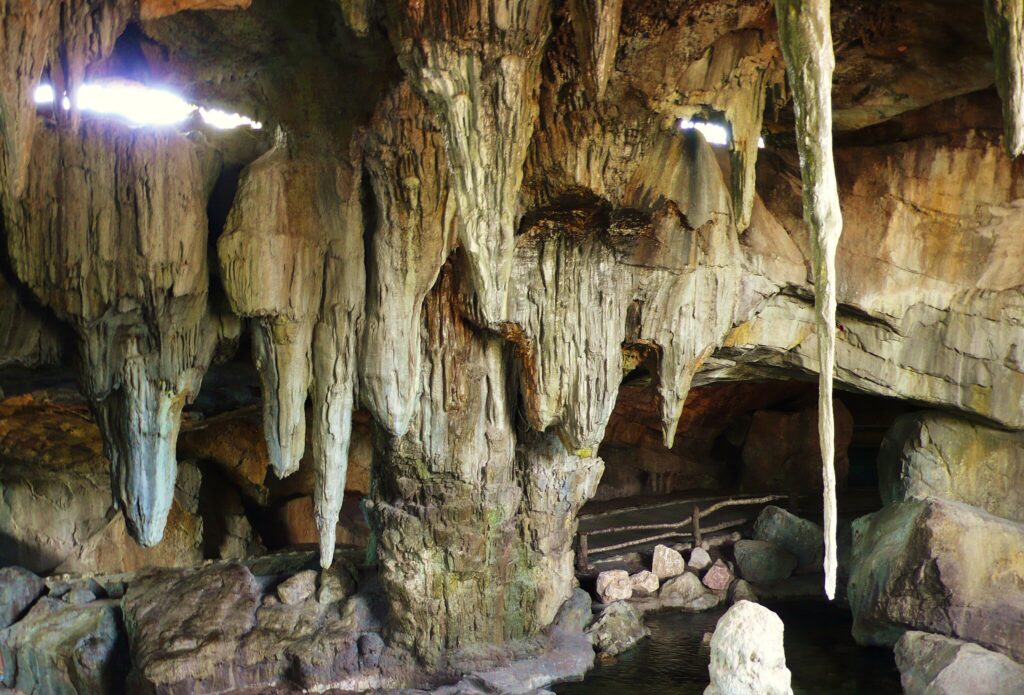Ancient Roman Discoveries in Spanish Cave

Archaeologists have made a remarkable discovery in a partially flooded cave in eastern Spain. The Cova de les Dones has revealed Roman-era inscriptions and a corroded coin, estimated to be nearly 1,900 years old. These findings suggest that the cave was used for ritual purposes during the Roman occupation of the Iberian Peninsula. The artifacts were found in a unique setting, embedded in the cave’s natural formations, indicating the site’s historical significance.
Discovery of Roman Artefacts in Cova de les Dones
The recent excavation at Cova de les Dones has unveiled a corroded Roman coin and 15 inscriptions. The coin was discovered wedged between a crack in the ceiling and a stalactite. Dating back to the reign of Emperor Claudius, which spanned from A.D. 41 to 54, the coin is believed to have been placed there as an offering. This practice aligns with the idea that the cave served as a sanctuary for ancient peoples.
The inscriptions, carved into the rock, are thought to have been made during the Roman occupation. While the exact meanings of these inscriptions remain unclear, experts believe they provide insight into the cave’s role as a sacred space. The combination of the coin and the inscriptions suggests that the cave was not merely a shelter but a site of spiritual significance. This discovery adds a new layer to our understanding of Roman rituals and their connection to the natural world.
Historical Significance of the Cave
Cova de les Dones is not just a site of Roman artifacts; it has a rich history that spans thousands of years. Previous excavations have uncovered Iron Age ceramics and prehistoric rock art, including images of an auroch and a stag. A study published in 2023 documented over 110 cave paintings, some of which are believed to be more than 24,000 years old. These findings indicate that the cave has been a focal point for human activity for millennia.
The presence of such ancient artwork, alongside the Roman discoveries, highlights the cave’s long-standing importance to various cultures. The overlapping cave bear claw marks found near the paintings suggest that the site has been a place of significance for both humans and wildlife. This deep historical context enriches our understanding of the cave and its role in the lives of those who inhabited the region.
Expert Analysis on the Discoveries
Experts are excited about the implications of these findings. Aitor Ruiz-Redondo, a professor of prehistory at the University of Zaragoza, shared insights in an interview with Levante. He emphasized that the inscriptions and the coin confirm the cave’s continued use as a ritual site during the Roman period. This continuity of use suggests that the cave held a special place in the spiritual lives of its visitors.
Ruiz-Redondo’s analysis points to the significance of the cave as a sanctuary. The combination of offerings and inscriptions indicates that people sought to connect with the divine or the supernatural in this space. The findings not only shed light on Roman practices but also contribute to our understanding of the broader cultural landscape of the Iberian Peninsula during this era.
Further Exploration and Future Findings
Cova de les Dones is a vast site, consisting of a single chamber that extends 500 meters and opens onto a steep canyon. Currently, only a fraction of the cave has been explored, leaving large sections untouched. The inscriptions are located approximately 200 meters from the cave’s entrance, hinting at the potential for further discoveries.
Researchers are optimistic about what future explorations may reveal. Reports indicate that much of the prehistoric artwork has yet to be studied in detail. As archaeologists continue their work, they anticipate uncovering new insights into the cave’s extensive history. The ongoing exploration of Cova de les Dones promises to enhance our understanding of ancient rituals and the cultural significance of this remarkable site.
Observer Voice is the one stop site for National, International news, Sports, Editor’s Choice, Art/culture contents, Quotes and much more. We also cover historical contents. Historical contents includes World History, Indian History, and what happened today. The website also covers Entertainment across the India and World.
Follow Us on Twitter, Instagram, Facebook, & LinkedIn

